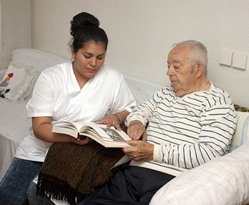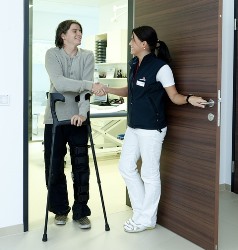How to Pick the Right RN Training Program near Belt Montana
 Choosing the right nursing program near Belt MT may seem like a formidable undertaking, particularly if you don’t know what to look for in a good degree program. As you may already understand, in order to practice as a registered nurse, you must acquire the proper education and training in order to become licensed. So it is essential that you study and assess the qualifications of each program you are contemplating before enrolling in your ultimate selection. Regrettably, too many prospective students base their determination solely on the cost of tuition and the distance of the school. Choosing the least costly school or the one that is local to your house is undoubtedly not the most ideal way to choose a nursing program. There are several key additional considerations to investigate before you make a decision where to attend classes. But before we examine that checklist, let’s first review the nursing degree alternatives that are offered together with what the jobs of nurses are in our medical care system.
Choosing the right nursing program near Belt MT may seem like a formidable undertaking, particularly if you don’t know what to look for in a good degree program. As you may already understand, in order to practice as a registered nurse, you must acquire the proper education and training in order to become licensed. So it is essential that you study and assess the qualifications of each program you are contemplating before enrolling in your ultimate selection. Regrettably, too many prospective students base their determination solely on the cost of tuition and the distance of the school. Choosing the least costly school or the one that is local to your house is undoubtedly not the most ideal way to choose a nursing program. There are several key additional considerations to investigate before you make a decision where to attend classes. But before we examine that checklist, let’s first review the nursing degree alternatives that are offered together with what the jobs of nurses are in our medical care system.
Request Free Information on Nursing Schools Below
Nursing Degree Options
There is more than one degree option available to become a nurse. And to become a Registered Nurse (RN), a student must attend an accredited school and program. A nursing student can acquire a qualifying degree in just 2 years, or advance to obtain a graduate degree for a total of six years. Following are some brief descriptions of the nursing degrees that are offered to aspiring students in the Belt MT area.
- Associates Degree. The Associate Degree in Nursing (ADN) is commonly a 2 year program made available by community colleges. It preps graduates for an entry level position in nursing in medical facilities such as hospitals, clinics or nursing homes. Many utilize the ADN as an entry into nursing and later obtain a more advanced degree.
- Bachelor’s Degree. The Bachelor of Science in Nursing (BSN) offers more extensive training than the ADN. It is commonly a 4 year program offered at colleges and universities. Licensed RNs may be qualified to complete an accelerated program based on their past training or degree and professional experience (RN to BSN). Those applying to the program may desire to progress to a clinical or administrative position, or be more competitive in the employment market.
- Master’s Degree. The Master of Science in Nursing (MSN) is typically a two year program after acquiring the BSN. The MSN program provides specialization training, for instance to become a nurse practitioner or concentrate on administration, management or teaching.
After a graduating student has attained one of the above degrees, she or he must pass the National Council Licensure Examination for Registered Nurses (NCLEX-RN) to become licensed. Various other requirements for licensing can vary from state to state, so make sure to get in touch with the Montana board of nursing for any state requirements.
Click Here to Get Free Information on Nursing Schools Near You!
Why Nursing?
 Nurses are an indispensable part of a Belt MT medical team, and for a large number of patients, their primary care providers. A nursing career opens doors to a number of opportunities, such as healthcare education, research and specialty areas of practice. Nurses enter the profession for many reasons, the most notable are its practical and personal rewards. Nurses provide direct, one-on-one care to patients. Many individuals in a medical facility or home care setting spend more time with nurses than with physicians. Nurses often go into the profession due to a passion to administer to the needs of patients, including in cases of short-term treatment of illness and extended care of chronic ailments. This humanistic aspect of the health profession, as opposed to the research or analytical related facets, is attractive to many who elect to enter into a nursing career. Nurses have extensive applicable skills and can select from a number of work environments, such as nursing homes, physician’s offices, health clinics, community centers and hospitals. Also, nurses can progress into a variety of specializations, such as addictions, critical care, neonatology and genetics. While many nurses deliver primary patient care, others elect to be educators, policy consultants and pharmaceutical representatives.
Nurses are an indispensable part of a Belt MT medical team, and for a large number of patients, their primary care providers. A nursing career opens doors to a number of opportunities, such as healthcare education, research and specialty areas of practice. Nurses enter the profession for many reasons, the most notable are its practical and personal rewards. Nurses provide direct, one-on-one care to patients. Many individuals in a medical facility or home care setting spend more time with nurses than with physicians. Nurses often go into the profession due to a passion to administer to the needs of patients, including in cases of short-term treatment of illness and extended care of chronic ailments. This humanistic aspect of the health profession, as opposed to the research or analytical related facets, is attractive to many who elect to enter into a nursing career. Nurses have extensive applicable skills and can select from a number of work environments, such as nursing homes, physician’s offices, health clinics, community centers and hospitals. Also, nurses can progress into a variety of specializations, such as addictions, critical care, neonatology and genetics. While many nurses deliver primary patient care, others elect to be educators, policy consultants and pharmaceutical representatives.
Registered Nurse Job Duties
 Registered nurses are the primary occupation in the medical delivery system. RNs practice in many different medical environments, namely Belt MT hospitals, private practices, outpatient clinics, nursing homes and even schools. Their basic duty is to assist doctors in the treatment of their patients. Having said that, the particular duties of a registered nurse will be dependent on their job or specialization in addition to where they work. Some of the responsibilities of an RN may include:
Registered nurses are the primary occupation in the medical delivery system. RNs practice in many different medical environments, namely Belt MT hospitals, private practices, outpatient clinics, nursing homes and even schools. Their basic duty is to assist doctors in the treatment of their patients. Having said that, the particular duties of a registered nurse will be dependent on their job or specialization in addition to where they work. Some of the responsibilities of an RN may include:
- Administering medications
- Monitoring patients
- Performing physical examinations
- Managing care
- Managing LPNs, LVNs and nurse aides
- Educating patients and their families
- Taking care of health records and charts
Nurses with a more advanced degree may have more high level job duties and accountabilities. Nurse practitioners (NP), for example, must hold a Master’s Degree and normally work more independently than their RN counterparts. They can administer primary or specialty care services, prescribe medications, and diagnose and treat common illnesses or injuries.
Online Nursing Degrees
 Attending nursing schools online is growing into a more favored way to receive instruction and attain a nursing degree. Some schools will require attending on campus for part of the training, and nearly all programs require a certain amount of clinical rotation hours performed in a local healthcare facility. But since the balance of the training can be accessed online, this alternative may be a more practical answer to finding the free time to attend school for many Belt MT students. Pertaining to tuition, many online degree programs are less costly than other on campus options. Even other expenses such as for commuting and study materials may be lessened, helping to make education more easily affordable. And many online programs are accredited by organizations like the Commission on Collegiate Nursing Education (CCNE) for BSN and MSN degrees. And so if your job and family obligations have left you with little time to work toward your academic goals, perhaps an online nursing school will make it easier to fit a degree into your hectic schedule.
Attending nursing schools online is growing into a more favored way to receive instruction and attain a nursing degree. Some schools will require attending on campus for part of the training, and nearly all programs require a certain amount of clinical rotation hours performed in a local healthcare facility. But since the balance of the training can be accessed online, this alternative may be a more practical answer to finding the free time to attend school for many Belt MT students. Pertaining to tuition, many online degree programs are less costly than other on campus options. Even other expenses such as for commuting and study materials may be lessened, helping to make education more easily affordable. And many online programs are accredited by organizations like the Commission on Collegiate Nursing Education (CCNE) for BSN and MSN degrees. And so if your job and family obligations have left you with little time to work toward your academic goals, perhaps an online nursing school will make it easier to fit a degree into your hectic schedule.
What to Ask Nursing Schools
 Once you have decided on which nursing program to enroll in, as well as whether to attend your classes on campus near Belt MT or on the web, you can utilize the following guidelines to begin narrowing down your choices. As you no doubt realize, there are a large number of nursing schools and colleges throughout Montana and the United States. So it is essential to reduce the number of schools to choose from so that you will have a manageable list. As we earlier mentioned, the location of the school along with the expense of tuition are undoubtedly going to be the primary two factors that you will look at. But as we also stressed, they should not be your sole qualifiers. So before making your ultimate decision, use the following questions to evaluate how your pick compares to the field.
Once you have decided on which nursing program to enroll in, as well as whether to attend your classes on campus near Belt MT or on the web, you can utilize the following guidelines to begin narrowing down your choices. As you no doubt realize, there are a large number of nursing schools and colleges throughout Montana and the United States. So it is essential to reduce the number of schools to choose from so that you will have a manageable list. As we earlier mentioned, the location of the school along with the expense of tuition are undoubtedly going to be the primary two factors that you will look at. But as we also stressed, they should not be your sole qualifiers. So before making your ultimate decision, use the following questions to evaluate how your pick compares to the field.
- Accreditation. It’s a good idea to make sure that the degree or certificate program in addition to the school is accredited by a U.S. Department of Education acknowledged accrediting agency. Besides helping confirm that you receive a quality education, it may help in acquiring financial aid or student loans, which are often not available in Belt MT for non-accredited schools.
- Licensing Preparation. Licensing prerequisites for registered nurses vary from state to state. In all states, a passing score is required on the National Council Licensure Examination (NCLEX-RN) together with graduation from an accredited school. Some states require a certain number of clinical hours be performed, as well as the passing of additional tests. It’s essential that the school you are attending not only provides an excellent education, but also prepares you to comply with the minimum licensing standards for Montana or the state where you will be practicing.
- Reputation. Check internet rating companies to see what the assessments are for all of the schools you are looking into. Ask the accrediting organizations for their reviews as well. In addition, contact the Montana school licensing authority to determine if there are any complaints or compliance issues. Finally, you can speak with some Belt MT healthcare organizations you’re interested in working for after graduation and ask what their assessments are of the schools as well.
- Graduation and Job Placement Rates. Find out from the RN programs you are looking at what their graduation rates are as well as how long on average it takes students to complete their programs. A low graduation rate may be an indication that students were displeased with the program and dropped out. It’s also important that the schools have high job placement rates. A high rate will not only verify that the school has a superb reputation within the Belt MT medical community, but that it also has the network of contacts to help students gain employment.
- Internship Programs. The best way to get experience as a registered nurse is to work in a clinical setting. Essentially all nursing degree programs require a certain number of clinical hours be completed. Various states have minimum clinical hour mandates for licensing also. Find out if the schools have a working relationship with Belt MT hospitals, clinics or labs and help with the placement of students in internships.
Top Nursing Colleges Belt MT
University Nursing Programs Belt Montana
Selecting the right nursing school is potentially the most important phase to launching a new career in the health care field. There are various factors that you should think about when choosing a nursing college. These factors will be prioritized differently depending on your current career goals, obligations, and financial status. As we have highlighted within this content, it is critical that you choose a nursing college and a degree program that are each accredited and have exceptional reputations within the medical community. You originally came to this website due to your interest in University Nursing Programs and wanting more information on the topic Nursing Courses.. However, by using our list of qualifying questions, you will be able to produce a short list of schools to select from so that you can make your ultimate selection. And with the right degree and training, combined with your hard work and desire to succeed, you can become a practicing nurse in Belt MT.
More Montana Nursing Locations
Belt, Montana
Belt is located at 47°23′9″N 110°55′36″W / 47.38583°N 110.92667°W / 47.38583; -110.92667 (47.385935, -110.926587).[7] According to the United States Census Bureau, the town has a total area of 0.35 square miles (0.91 km2), all of it land.[1]
As of the census[2] of 2010, there were 597 people, 261 households, and 159 families residing in the town. The population density was 1,705.7 inhabitants per square mile (658.6/km2). There were 295 housing units at an average density of 842.9 per square mile (325.4/km2). The racial makeup of the town was 95.5% White, 1.7% Native American, 0.5% Asian, 0.2% from other races, and 2.2% from two or more races. Hispanic or Latino of any race were 1.0% of the population.
There were 261 households of which 29.1% had children under the age of 18 living with them, 47.5% were married couples living together, 10.7% had a female householder with no husband present, 2.7% had a male householder with no wife present, and 39.1% were non-families. 33.0% of all households were made up of individuals and 13.7% had someone living alone who was 65 years of age or older. The average household size was 2.29 and the average family size was 2.92.
